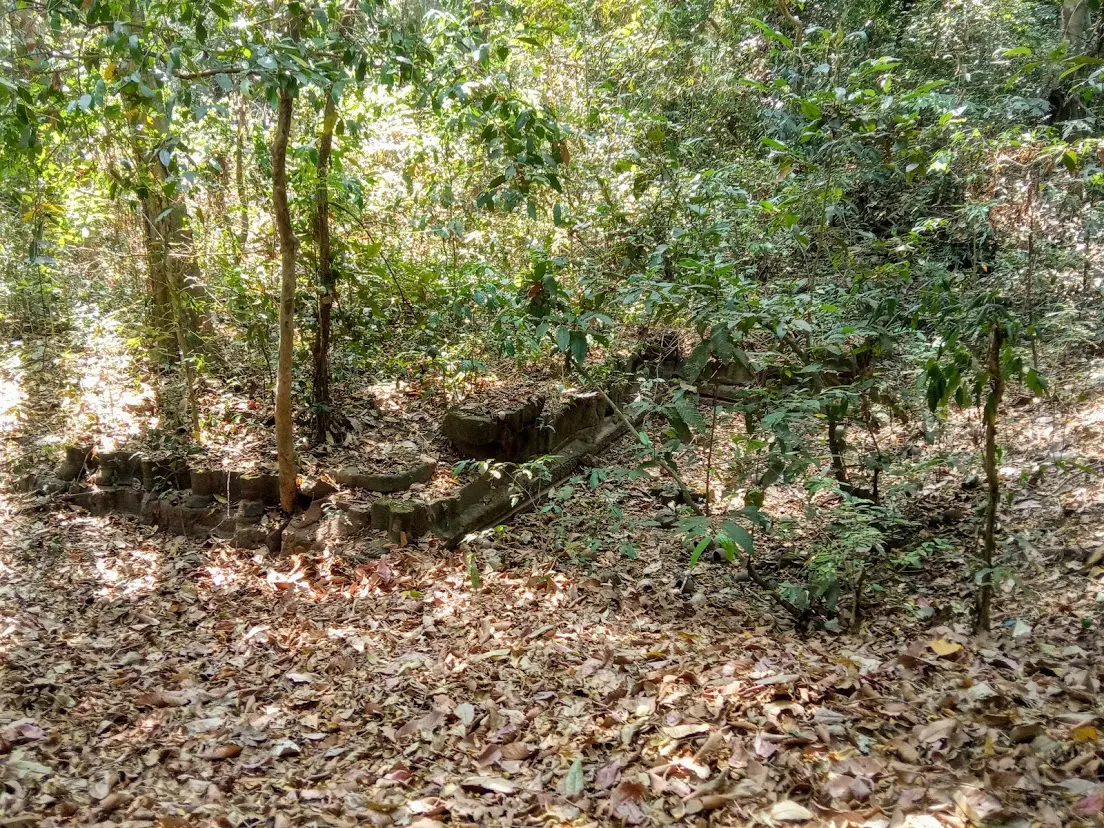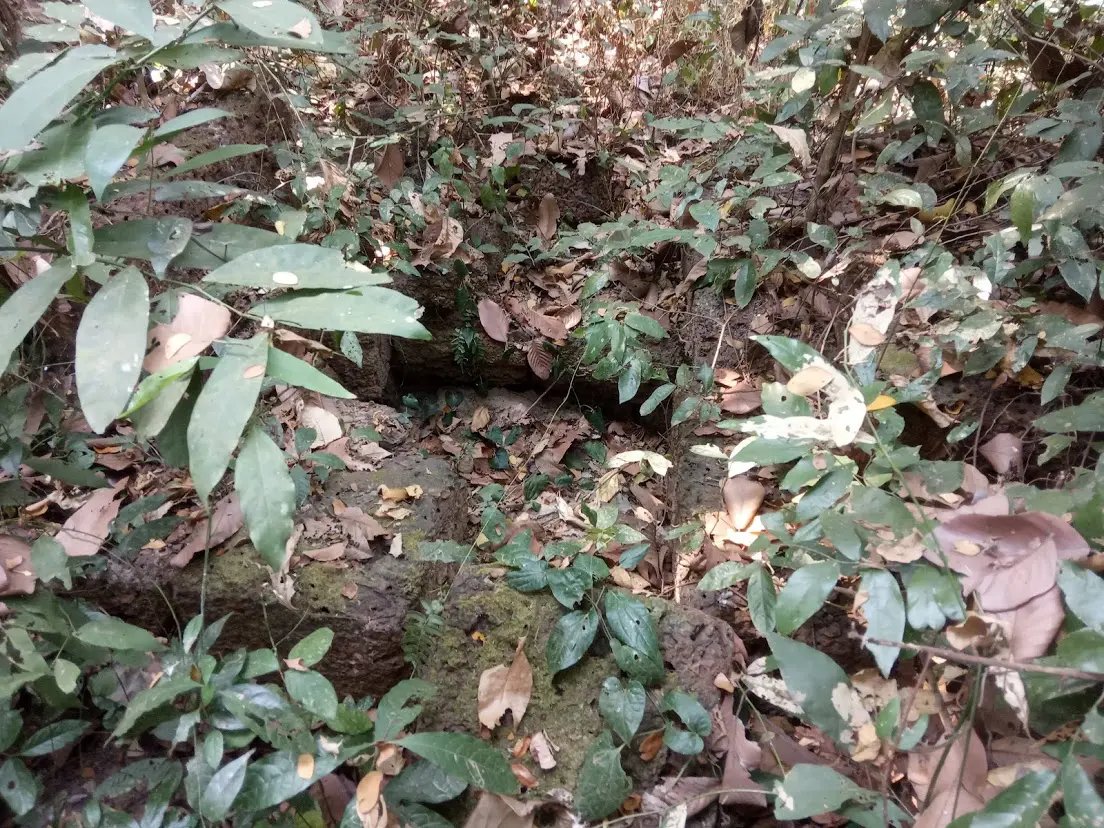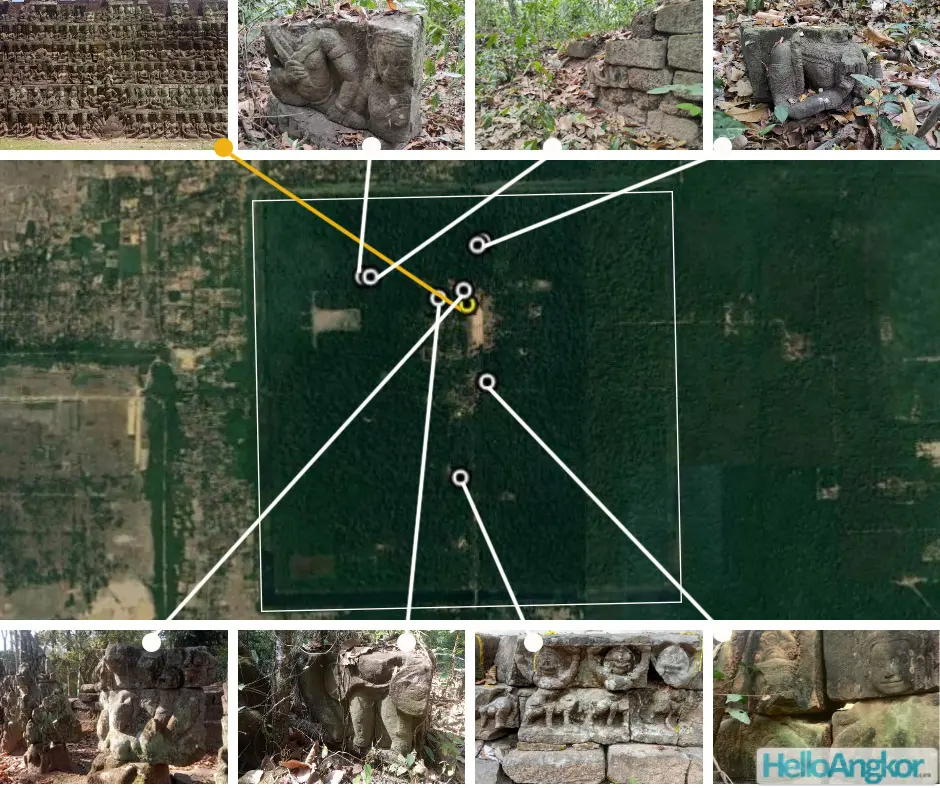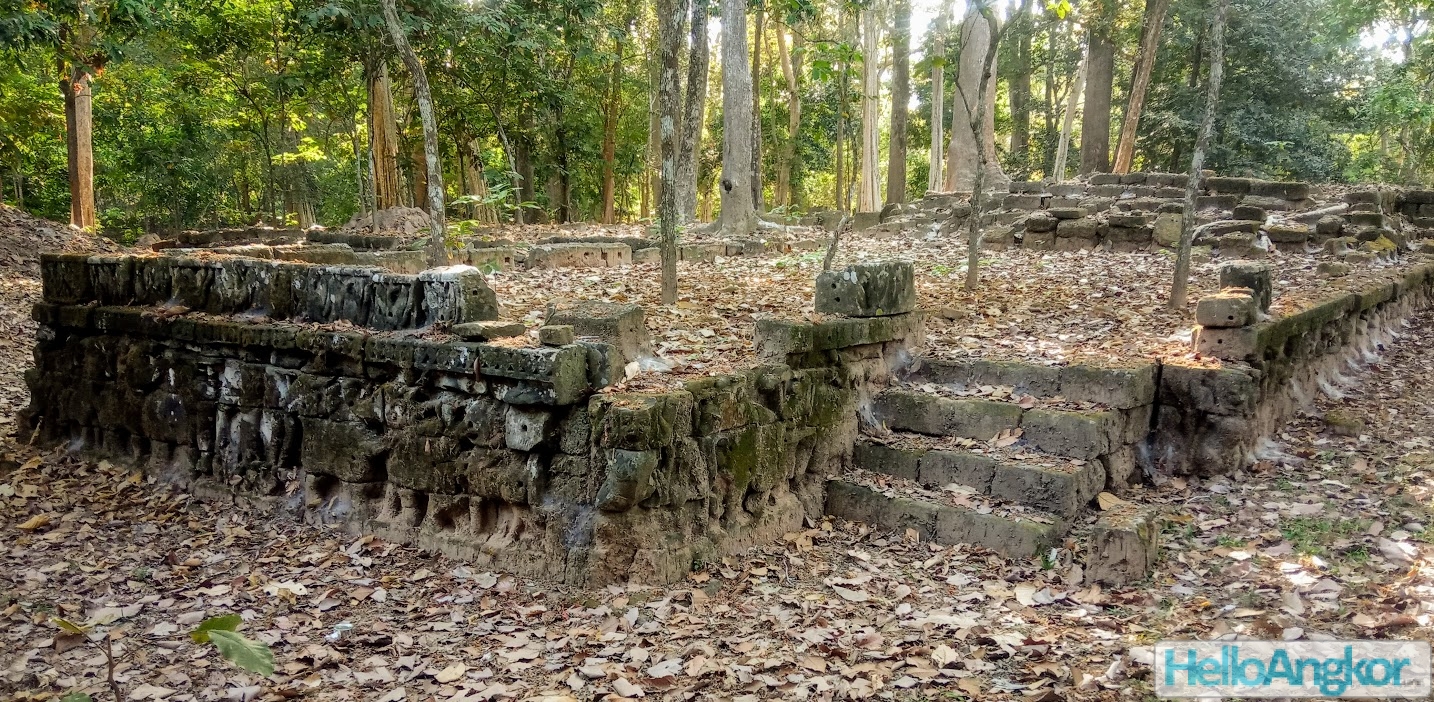The Terrace of the Leper King, located in Angkor Thom between Tep Pranam and the Terrace of the Elephants/Royal Palace, was first cleared by Jean Commaille, in 1911, which revealed the amazing reliefs of the internal wall. This clearing work was continued by Henri Marchal between 1917 to 1925, and followed by BP Groslier who started further restoration works in 1967 until 1972. Still incomplete, restoration works were not resumed again until the early 1990s.
The work in the 1990s was made all the more difficult by the loss of BP Groslier’s notes thus limiting the restoration. It was known at that time that the terrace featured four enormous wooden pillars which could be assumed to have supported a triangular wooden gabled roof as depicted on the walls of the Bayon temple and similar to pagodas of today.
In 1937 Marchal noted that the terrace would have originally extended to the south, joining the Terrace of the Elephants and also extending north and likely deconstructed/altered when then the Tep Pranam terrace that we see today was formed (a site dated to the 9th century that was reconstructed as a Buddhist Terrace sometime between the 13-16th century).






The Leper King Terrace is quite unusual, and without an equivalent, which Cœdès (an early icon of archeology and research in Angkor) wondered whether it was in fact “Meru” as mentioned in the inscriptions of Prasat Kev (Ta Keo) and Prasat Kok Po. He was more certain in the belief that it was the seat of the “the Inspector of Qualities and Faults” or Dharmaraja aka Yama the God of Death whose statue sits atop the terrace today (revered as the Leper King and the legend of king Yasovarman I).
The Terrace of the Leper King we see today centers almost wholly on the roughly 30 m x 30 m x 30 m bas-relief wall that encloses the almost cruciform terrace, also adorned with bas-reliefs, that extends from the north-south axis. To the south of the north-south axis is a large gap followed by the Terrace of the Elephants which continues to the terrace fronting Baphoun temple.
If we head north from the Leper King Terrace we reach the area of Tep Pranam. As mentioned earlier, the area here was, safe to say, heavily modified during the 13th – 16th century. Of this northern wing of the Leper King Terrace, we see reconstructed wall outlines and an amazing effort to reform the section from a large array of puzzle pieces that abound in the area.



After that is the entrance to Tep Pranam and the refuse area followed by woodland. So, that’s it, right? Not quite, that’s just a long-winded intro to the real kicker.
If we stroll by foot and follow the path of laterite north of the Leper King Terrace, past the entrance to Tep Pranam, past a current refuse area, and, surprise! A hidden and very mysterious section of the Leper King Terrace with bas-reliefs can be found covered in leaves and completely hidden from passers-by.










Only one or two rows remain to form a rectangle that then leads north for another 50-60 m. Some reliefs will seem familiar, while some appear a bit unusual.
Behind the bas-reliefs, remnants of a brick wall can be seen and its northern end, a sprawl of laterite blocks which may be part of the drainage structure pictured in the B/W images further below and as noted by Marchal in the mid-1900s.




BW Images property of EFEO Fonds Cambodge
What is interesting is how this may tie into a bigger story being the “Buddhist Terraces” that were constructed of recycled materials from older temple sites during the rise of Theravada culture post the collapse of the God-king era which is covered in more detail here. Why do I say that? Take a look where just a selection of carved sandstone pieces have been spotted *that could* originate from the Leper King Terrace area (first pic)

Several terrace-like relief carvings can be seen arranged around the terrace/Tep Pranam area, just north of the Royal Palace annex, along the north embankment above Preah Palilay, another piece further in the middle of the NE quadrant, Preah Vihear Pram Pi Lven, and at other Buddhist Terrace constructions around Angkor Thom.
While the mystery of the north wing of the Leper King Terrace is likely outside their scope, I do know that the Buddhist Terraces of the post-god-king era are being studied by the Angkor Vihara Project, so, definitely stay tuned to that one.
It’s also interesting to think about the terrace (pictured below) that sits within the Royal Palace, west of the grand basin, and the similarity between the carvings and what, if any, relationship there is between the two sites.

Conclusion
I would believe that there is much more known about that this area than what I am able to establish to date. If you do know more, please reach out on Facebook or email as listed further below.
So, as usual, I end without an answer, and yet another mystery which is what makes Angkor Thom one of the most exciting places to visit, study, and explore.
References
- Cœdès Georges. Etudes cambodgiennes. In: Bulletin de l’Ecole française d’Extrême-Orient. Tome 28 N°1, 1928. pp. 81-146; doi : https://doi.org/10.3406/befeo.1928.3117 https://www.persee.fr/doc/befeo_0336-1519_1928_num_28_1_3117
- Dumarçay Jacques, Pottier Christophe. La reprise des travaux de la Terrasse du Roi lépreux. In: Arts asiatiques, tome 48, 1993. pp. 158-160; doi : https://doi.org/10.3406/arasi.1993.1344 https://www.persee.fr/doc/arasi_0004-3958_1993_num_48_1_1344
- Marchal Henri. III. Notes sur les Terrasses des Eléphants, du Roi Lépreux et le Palais royal d’Ankor Thom. In: Bulletin de l’Ecole française d’Extrême-Orient. Tome 37, 1937. pp. 347-360;
doi : https://doi.org/10.3406/befeo.1937.5356 https://www.persee.fr/doc/befeo_0336-1519_1937_num_37_1_5356

